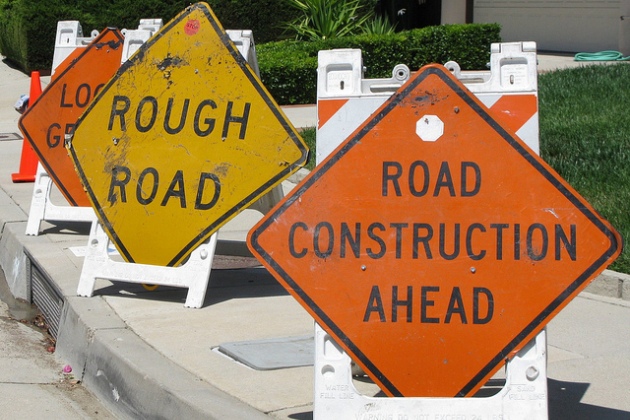
Over the next 13 years there will be more construction projects in and around Belleville as more money is allocated from the provincial government. Photo via Flickr
By Robert Champagne [1]
BELLEVILLE – The Ontario government has announced plans for $190 billion in infrastructure investment over the next 13 years.
In and around Belleville the funding will support 10 projects that are already under construction and five where work is planned.
The projects include construction of an electric car-charging station at Tim Hortons at 218 Bell Blvd., and erection of 10 new bus shelters around the city.
Some of the projects underway are renovations to the medical device reprocessing department and central sterilization room at Belleville General Hospital, which should be completed next month, and renovations on the third floor of Loyalist College to create a new Health and Wellness Centre. This project will upgrade the building and systems, increase accessibility and meet energy-efficiency goals.
The government has introduced an interactive map [2] so citizens can see what projects are going on around them.
The projects are to benefit all Ontarians and not just Toronto, saysDeanna Natalizio, a spokeswoman for theMinistry of Infrastructure.
“The province’s commitment to spending about $190 billion in infrastructure over 13 years is about ensuring that all Ontario communities, whether they be in rural, Northern or urban areas, have access to critical infrastructure,” Natalizio told QNet News in an email interview.
“The government is committed to planning based on evidence, which makes use of the best available analytics, research and information on program results to guide government decisions. This will ensure that spending is allocated in a way that allows all Ontarians to enjoy a high quality of life,” she said.
“The plan is about making infrastructure resilient and adaptable to the current state of Ontario’s communities as well as preparing for future change. For example, the plan takes into account the realities of climate change in a world in which temperatures are rising, and fast-paced social, economic and technological changes.
“The plan also addresses the latest population trends, including changes in population volume and regional distribution. The Greater Toronto Area is projected to be the fastest-growing region of the province, while some smaller rural communities are experiencing population decline. Both trends will produce different impacts on Ontario’s public infrastructure assets which is reflected in the province’s infrastructure planning.”
The increase in spending proposes updates of, and investment in, hospitals, schools, public transit, roads and bridges.